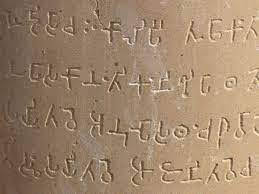The most frequent script among the inscriptions of the Maurya dynasty's greatest figure, Emperor Ashoka (r. 269–232 B.C.E.).
Except for the deepest regions of southern India, Ashoka's empire spanned the whole subcontinent and extended west into modern-day Afghanistan.
Except in the northwest, where the Kharoshthi script was employed, the Brahmi script was used throughout the Mauryan kingdom.
The oldest important Indian written texts are Ashoka's rock and pillar edicts, which provide vital information on current social, political, and religious life.
Brahmi is the forerunner of today's Indian scripts, such as Devanagari.
Brahmi was eventually superseded by subsequent scripts, forgotten, and rendered illegible.
Despite the fact that Ashoka's inscriptions made Brahmi known to Europeans, its meaning remained a mystery until 1837, when James Prinsep decoded the Brahmi alphabet by working backwards from later, recognized scripts.
You may also want to read more about Hinduism here.
Be sure to check out my writings on religion here.






